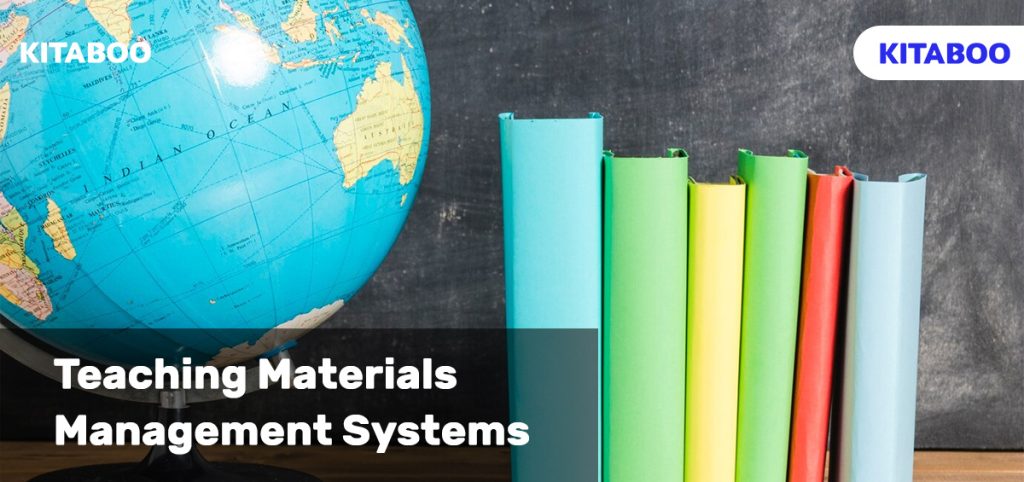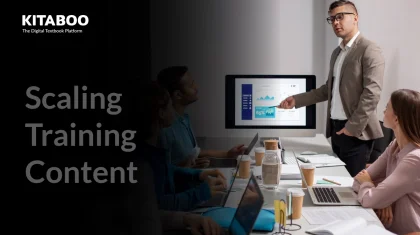
How to Optimize Teaching Materials Distribution for Remote Learning?
Summarize this blog with your favorite AI:
In the modern era, education has expanded its reach, primarily due to the advent of remote learning. This change, powered by the digital revolution, has been crucial in serving previously underserved communities. With this transformation, the manner in which students access and interact with learning materials has also undergone a significant evolution.
Ensuring that teaching materials are effectively distributed to their intended audience is vital. In this regard, digital textbook platforms like KITABOO have streamlined this process, making it easier for educators and institutions to reach students wherever they are. The platform not only helps educators in delivering content but also in creating interactive and engaging materials tailored to the needs of remote learners.
In this post, we will explore the best practices and strategies to optimize teaching materials distribution for remote learning.
Read on!
Table of Contents
I. Impact of Remote Learning on Students
II. Recognizing and Addressing Elemental Infrastructure Challenges
III. 4 Key Ways to Distribute Teaching Materials at Scale for Remote Learning
- Determine a Distribution Approach
- Screening for Technology Partners
- Onboarding the Stakeholders
- Implementing the Remote Program
IV. Summing It Up
Impact of Remote Learning on Students
Remote learning has grown massively after the pandemic. Data shows that there were about 189 million online learners in 2021. This highlights the profound shift in the educational landscape and the acceptance of digital learning platforms by institutions, educators, and students alike.
Remote learning can reinforce the curriculum with the following benefits:
- It helps students learn in a flexible manner, bypassing the strict requirements for fulfilling minimum attendance.
- It enables students to leverage the teaching materials in a self-directed manner, enabling them to improve their learning and comprehension.
- In the absence of a physical classroom, many potential challenges, such as bullying, are mitigated, creating a more inclusive and supportive learning atmosphere.
- Additionally, teachers also benefit significantly from remote learning. They are liberated from following strict schedules, giving them more time to plan effective curricula and provide better assessments for the students.
Recognizing and Addressing Elemental Infrastructure Challenges
Remote distribution of teaching materials can be achieved at scale – but it requires a robust infrastructure to be in place. It’s essential that this infrastructure remains streamlined and accessible, ensuring even those with limited resources can reliably access educational content.
Teaching materials distribution for remote education may face the challenges listed below, especially when relying on digital technologies to achieve the outcome:
- Limited access to the internet is one of the major challenges that resource distribution faces. Especially in developing or remote areas where electricity or computers are still a privilege, it can be difficult to distribute digital learning resources.
- For students who require parental permission to access computers, distribution becomes a hurdle when parents are preoccupied or unavailable.
However, with innovative strategies and adaptability, educators can ensure that teaching materials reach every corner, providing an equitable learning experience for all.
4 Key Ways to Distribute Teaching Materials at Scale for Remote Learning
In today’s digital era, remote learning primarily revolves around utilizing online platforms to access academic resources. This involves learners logging on to a platform and accessing the courseware to commence learning.
The four strategies discussed below can significantly streamline the teaching materials distribution process.
1. Determine a Distribution Approach
In the realm of digital learning, multiple distribution methods are available, catering to various learner needs and technical capabilities.
Here are some approaches that help educators select the most effective method based on their audience and content:
- Emails: The teacher requests the students to share their email IDs on which they would receive the courseware.
- Portals/platforms: Where students can use their login IDs to access the educational materials.
- Apps: Apps that students can download to their personal devices and access any educational materials they need.
2. Screening for Technology Partners
Effective distribution requires setting up a centralized digital infrastructure that can help educators keep the distribution organized. The right digital partners can help teachers implement systems for the following:
- Storing, sorting, and organizing the teaching materials.
- Segregating repository access by using identifiers for students of different grades.
- Enabling shareability of resources across channels so that the students who don’t have the means to access the system can receive the resources electronically elsewhere.
3. Onboard the Stakeholders
The success of any distribution system in education largely depends on the active involvement and understanding of its primary stakeholders: students and their parents or guardians. It is important to have an in-depth discussion with them to help them understand how systems will work in the near future.
It is only when the parents and students understand how to access and use the teaching materials distributed digitally that they can truly benefit from the system.
4. Implement the Remote Program
Implementation of remote learning encompasses mobilizing all the distribution mechanisms put in place. To ensure that efficiency and impact remain high, educators can do a test run or a mock class online where all the systems implemented can be taken for a pilot run.
It helps to gather feedback from the stakeholders on whether or not they are able to access the teaching materials in the way it was intended. This feedback is key to improving the distribution efficacy.
Summing it Up
Technology, in combination with digital channels, has enabled the masses to have access to high-quality educational material. Additionally, the presence of OERs has helped them acquire a wide range of learning materials that are vetted and verified, solidifying their learning journey.
To help educators ensure that their teaching materials distribution process remains unhindered and efficient, KITABOO provides a full-fledged digital platform. This platform is equipped with digital access controls in addition to databases/repositories that help educators organize their teaching materials.
If you wish to understand how teaching materials distribution can be optimized at scale, KITABOO can demonstrate it to you.
Contact our expert team now and get started!
To know more, write to us at contact@kitaboo.com!
Suggested Reads:
Discover how a mobile-first training platform can help your organization.
KITABOO is a cloud-based platform to create, deliver & track mobile-first interactive training content.



![Top 5 Free Publishing Sites for Independent Publishing [2026]](https://kitaboo.com/wp-content/uploads/2025/09/Top-5-Free-Publishing-Sites-for-Independent-Publishing-2026-420x235.webp)